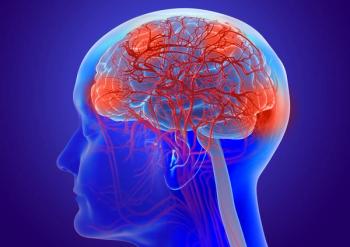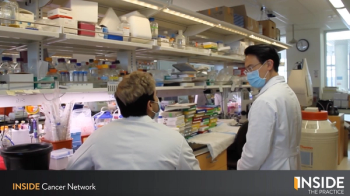
Brain Cancer
Latest News

Latest Videos
More News

Results from a multicenter study showed similar median overall survival results with laser interstitial thermal therapy compared with other tumor resection studies that used radiation and chemotherapy followed by laser ablation in patients with IDH wild-type glioblastoma.

CV-01 delivery of sonodynamic therapy has been granted orphan drug designation and fast track designation by the FDA for the treatment of recurrent glioblastoma.

According to long-term data, first-line treatment with procarbazine, lomustine, and vincristine chemotherapy plus radiotherapy offered prolonged disease control and survival benefit in anaplastic oligodendroglial tumors.

Dual Targeted Treatment Improves Response Over Chemotherapy in BRAF V600+ Pediatric Low-Grade Glioma
BRAF V600 mutation–positive pediatric low-grade glioma positively responds to combination treatment with dabrafenib plus trametinib, according to data presented at 2022 ASCO.

Non-White Hispanic pediatric patients with neuroblastoma appear to have worse overall survival outcomes vs other patient subgroups.

Children and young adults with H3K27M-positive diffuse intrinsic pontine gliomas and spinal diffuse midline gliomas saw a clinical benefit when treated with GD2-directed chimeric antigen receptor T cell therapy.

Early findings from the phase 1/2a TEM-GBM study presented at the 2022 AACR Annual Meeting displayed potential of temferon to affect the tumor microenvironment of glioblastoma.

A biologics license application for omburtamab was resubmitted following a refusal to file letter in 2020 for pediatric patients with central nervous system/leptomeningeal metastatic from neuroblastoma.

The recommended dose of ceritinib once daily with food demonstrated promising preliminary clinical activity in patients with ALK-positive relapsed/recurrent inflammatory myofibroblastic tumors and anaplastic large cell lymphoma, and certain subsets of relapsed/refractory neuroblastoma.

Treatment with armodafinil did not result in a significant difference in cancer-related fatigue between treatment arms for patients with high-grade glioma.

NUV-422 has demonstrated favorable blood-brain barrier penetration in patients with high-grade gliomas.

Patients with newly diagnosed glioblastoma who were treated with paxalisib saw positive efficacy and safety results.

Patients with high-grade and low-grade brain tumors who carry the BRAF V600E mutation were treated with dabrafenib and trametinib saw clinically meaningful results.

Patients with newly diagnosed glioblastoma saw improved progression-free survival when treated with tumor treating fields, pembrolizumab, and temozolomide versus historical control data.

Ghulam Gous, MD, and colleagues report a case of glioblastoma with extensive liver metastases along with a review of previous reports of liver metastasis from glioblastomas and the possible mechanisms of metastasis.

Patients who are White British and have been diagnosed with a malignant primary brain tumor were found to have a shorter survival compared with patients of other ethnicities.

Pediatric patients with medulloblastoma may experience benefit from 177Lu-omburtamab-DTPA, which was granted a rare pediatric disease designation by the FDA.

The Alpha DaRT system was granted breakthrough device designation by the FDA for the treatment of glioblastoma.

Pediatric patients with high-risk molecular subgroup group 3 medulloblastoma experienced an improvement in 5-year event-free survival after receiving therapy intensification with carboplatin.

The phase 2 clinical trial is currently recruiting patients with pediatric low-grade glioma to be treated with DAY101 following a rare pediatric disease designation by the FDA.

Based on its potential to prolong overall survival in patients with glioblastoma multiforme, berubicin was granted fast track designation for the FDA for the treatment of recurrent disease.

CancerNetwork® spoke with Albert H. Kim, MD, PhD, about a new Brain Tumor Center at Siteman, for which he is the inaugural director.

A durable clinical benefit was seen from the dual inhibition of the MAPK pathway using BRAF and MEK inhibitors dabrafenib and trametinib, respectively, to treat patients with BRAF V600E mutant low- and high-grade glioma.

Germline variants in cancer predisposition genes were associated with worse event-free and overall survival in patients with neuroblastoma.

ERC-USA announced that the FDA recommended the early termination of a phase 2 clinical trial of ERC1671 to treat patients with recurrent or progressive glioblastoma and pursue a randomized confirmatory phase 3 trial.





















































































